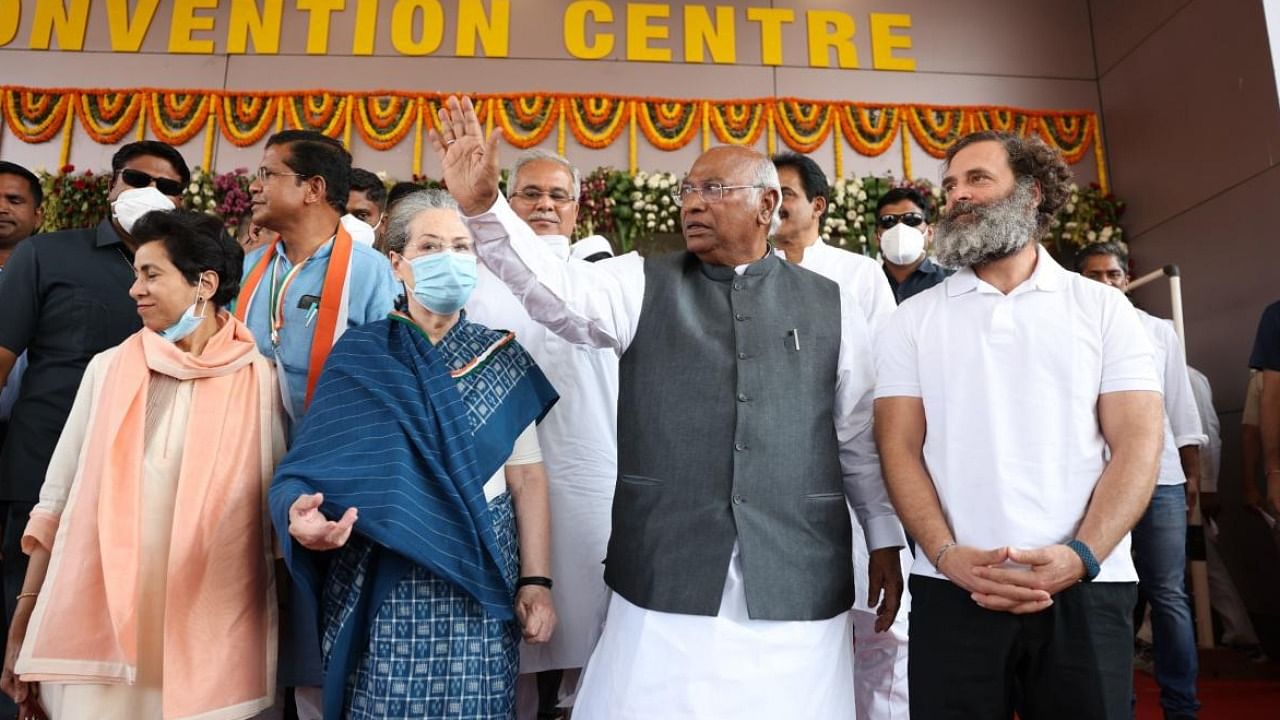
The 85th plenary session of the Congress held in Raipur was expected to spell out the party’s position on opposition unity, and unveil its roadmap for the 2024 Lok Sabha electoral battle.
The three-day session, which concluded in Raipur on February 26, did manage to go beyond ‘Modi-bashing’ as the various resolutions adopted at the session provided a preview of the specific social and economic measures it will present to the people in the run-up to the next general election as part of its effort to showcase its distinct vision and programme.
However, the three-day event sent out mixed signals on the key issue of opposition unity which is critical if the Congress is serious about dethroning the Narendra Modi-led National Democratic Alliance (NDA) government because there is no denying that the Congress does not have the capacity or the widespread presence to accomplish this task on its own.
The Congress had courted controversy well before the plenary session when its President Mallikarjun Kharge and other leaders declared that the grand old party is best placed to lead any future opposition alliance, and that it was Rahul Gandhi who has the ‘power’ to dethrone the Bharatiya Janata Party (BJP) from the Centre.
Continuing in the same vein, Kharge said in his inaugural speech at the plenary that “In the prevailing circumstances, Congress is the only party in the country which can provide capable and decisive leadership to the country,” while expressing the party’s willingness to work with other opposition parties.
These remarks, coupled with a stinging attack against Mamata Banerjee’s Trinamool Congress (TMC) on the eve of the session, did not go down well with the other non-BJP parties which are also positioning to take over the leadership of an opposition coalition. Banerjee and Telangana Chief Minister and Bharat Rashtra Samithi (BRS) chief K Chandrasekhar Rao have already made moves in that direction.
Thankfully, the political resolution adopted by the Congress took a more pragmatic position on the issue of opposition unity as it did not specifically say the grand old party would lead an anti-BJP front or that Rahul Gandhi would be projected as the party’s prime ministerial face.
While emphasising the need for putting up a united front against the BJP, the resolution said, “Congress should go all out to identify, mobilise and align like-minded secular forces…..There is an urgent need for a united opposition to take on the NDA on common ideological grounds.” At the same time, the resolution also referred to the UPA model, which was led by the Congress with Sonia Gandhi as face of the party.
This contradiction reflects the internal differences in the Congress as well as the dilemma it faces as the party must strengthen its base while also check the expansionist tendencies of regional parties with whom it has to do business in its fight against the BJP. There are two schools of thought within the Congress: one which wants the party to state emphatically that it is the main pillar of an opposition coalition with Rahul Gandhi is its leader, while the other prefers that these issues be kept open to avoid alienating potential allies.
This explains the public remarks before to plenary and the vague formulation on this issue in the political resolution adopted at the plenary session. The same can be said about Rahul Gandhi’s position and future role in the party.
Kharge is the Congress President, but it was Rahul Gandhi as well as Sonia Gandhi and Priyanka Gandhi Vadra who were the showstoppers at the three-day meet. The banner, posters, hoardings, and the slogans at the session hailing the family and the compliments heaped on the trio said it all. That the party decided against elections to the Congress Working Committee was yet another step to ensure that the family continues to have a major say in the formation of the party’s highest decision-making body. It was also evident that Rahul Gandhi, fresh from his successful Bharat Jodo Yatra, is the face of the party.
Stung by criticism that the Congress has little to offer except personal attacks against Modi, the party has attempted to present its programmes and policies through a set of specific measures such as the enactment of a law against hate crimes, an anti-discrimination law, and a Right to Healthcare Act, The economic resolution offers measures to deal with growing unemployment and inflation with its focus on the poor and marginal sections — a constituency it is trying to woo.
Faced with key assembly polls this year, and the general elections in 2024, the Congress has its task cut out. The party has provided a glimpse of what it has on offer for the voter(s). As the Congress sets out on an ambitious mass contact programme, it’s real challenge lies in convincing the people that it is a credible force, because only then will its message resonate with the public.
(Anita Katyal is a Delhi-based senior journalist)
Disclaimer: The views expressed above are the authors’ own. They do not necessarily reflect the views of DH